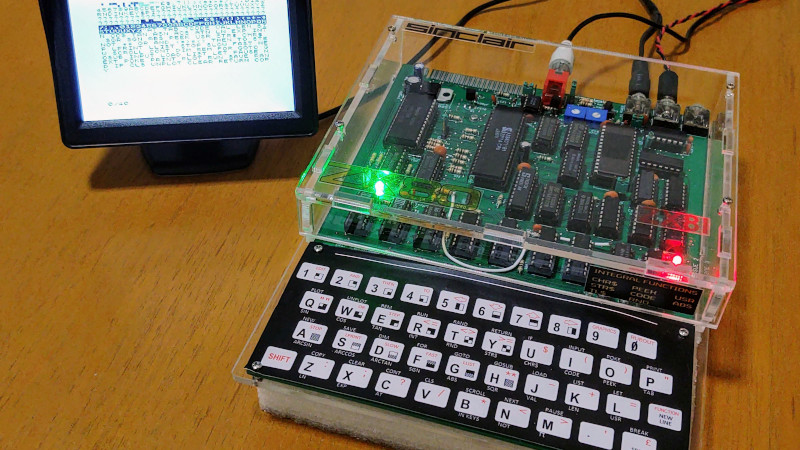
The golden age of 8-bit computing brought us pixelated graphics in bright colours, accompanied of course by chiptune music. This aesthetic is strong enough to define a collective image of a generation’s youth, even if the 1980s reality had much more of the tired 1970s leftovers about it. The truth was that not all popular 8-bit machines had colour, sound, or good graphics, and among these limited-capability machines was Sir Clive Sinclair’s ZX81. With a Z80, 1k of RAM, a membrane keyboard, and not much else, it helped set the stage for the hugely popular ZX Spectrum which followed it. The fun’s not over though, as [Augusto Baffa] demonstrates with his modern recreation of a machine that can switch between the ’81 and its less-popular ZX80 predecessor.
Rather than a Eurocard-sized mainboard and membrane keypad, this clone copies the ZX80 with a full-sized mainboard the front of which carries the keyboard contacts. It also eschews the ULA found in the ’81 for discrete TTL. It’s based upon the venerable Grant Searle design for a homebuilt Sinclair computer, and all of the files for this version can be found in a GitHub repository.
There is a lot to be said for the ZX81 as a model for retrocomputer experimentation, because of its extreme simplicity. It may have been no great shakes in the computing department compared to many of its competitors, but it remains possibly one of the easiest of the bunch whose operation to completely understand. Also we like it for that paltry 1k of memory, teaching kids about memory constraints is a good thing in our book.
We’ve featured the diminutive ZX more than once, including a couple of years ago in our April Fools coverage.
0 Commentaires